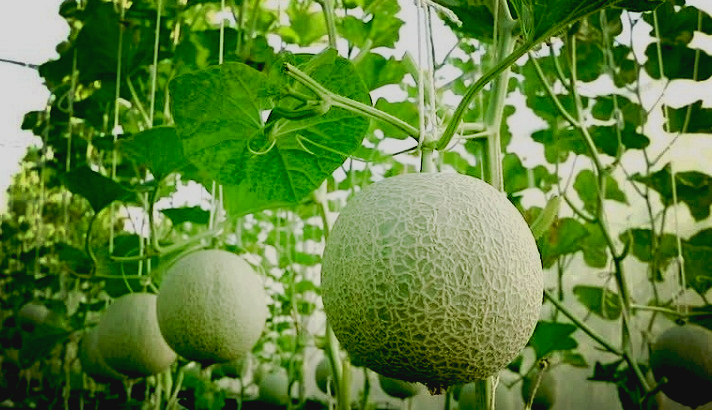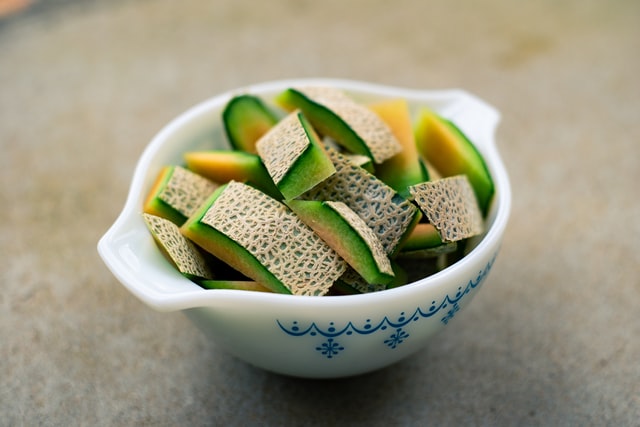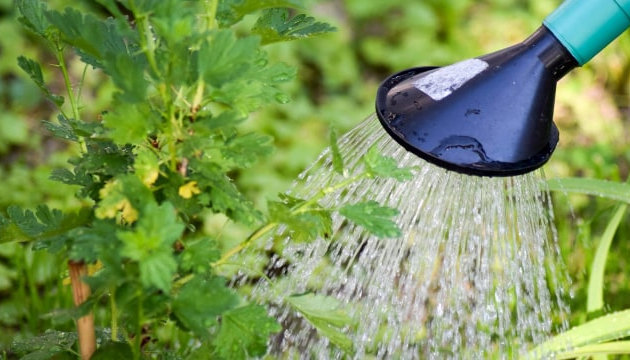Growing cantaloupe in containers with the support of either a cage or trellis is the best way to deal with tight space. There is no need for having and using a large area to grow juicy and delicious cantaloupe. It is possible to grow it vertically with the use of the right tools.
It will only need about 10 to 20 feet to grow a bunch of them. Growing cantaloupe vertically will require a clear understanding of how to do it properly. This is a clever way to help everyone with just a tight space to grow this awesome fruit at home.
Another reason for growing cantaloupe in containers trellis is that it will provide a good harvest in the end with proper maintenance and care. There will be fewer possible diseases that eventually affect the harvest.
The vertical growth will ensure that the foliage remains dry as well to contribute to preventing pests to attack the plants. Growing cantaloupe in containers is a way to be able to enjoy fresh organic fruit at home. Moreover, the greenery of the leaves is a great addition to any space for a fresh atmosphere.
How to Start Planting Cantaloupe?

The very first step to do in growing cantaloupe in containers is propagating it. There is no trick to do it properly, just sow the seeds in the containers. The best time to do that is either in spring or at most the early of summer. The warm weather will greatly help the initial growth of the crop.
Seeds
It needs about an inch deep to sow the seeds for them to grow correctly. One container will only be the place for two seeds at most even for small cantaloupe varieties. After one or two weeks the seeds will show its growth into plants.
Pots
Sowing the seeds for growing cantaloupe in containers can be done indoors with the use of biodegradable pots as the initial containers. Once the crops are ready to be transferred they will need either a 16 or 18 inches pot.
Trellis
Two of them can be planted together in a pot with at least 24 inches of size. This is the time to install either a cage or trellis around the pot for the support of the vines once they are grown.The trellis for growing cantaloupe in containers will need to be in a specific size. It needs to be strong and sturdy as well to support the weight of the fruits later on. Moreover the vine of cantaloupe is a dense and thick one as well.
The minimum size of the trellis is about 6 to 8 feet of its height and 15 to 20 feet of its width. The materials to use as the support trellis include livestock panels, hog fencing, and welded wires. Another support to prepare for the cantaloupe plant is a sling that will provide the needed support for the fruit once it gets bigger and heavier later on.
Important Things to Pay Attention
There are some important requirements to fill upon growing cantaloupe in containers to ensure the best result of it in the end. The first thing is a growing position. Cantaloupe is a crop for warm-season so that it needs to have a good drainage system along with plenty of sunlight to grow well.
Position And Soil
The proper temperature for growing cantaloupe in containers ranges from 65 to 90 F or 18 to 32 C. The Second thing is the soil to grow this crop. The best soil to use is loamy and organically rich of either pH6 or pH7. The soil has to be a well-draining one with the possible addition of compost or aged manure for its enrichment.
Watering
Watering is the third thing to pay attention to when growing cantaloupe in containers. Regular and even watering is needed to ensure that the soil is evenly moist all around. The watering needs to be done thoroughly to reach the right moisture level without being overly saturated.
The sign of that is the time the water drains freely from the bottom of the container. Wetting the foliage needs to be avoided at all costs when watering cantaloupe in containers. Mulching and pruning are the couple of things in number four to pay attention to.
Mulcing
Mulch the area around the base of the crop to enhance the moisture-retaining ability of the plant. Meanwhile, removing side branches is needed to keep the crop productive and healthy. Damaged stems caused by disease will need to be removed as well.
Fertilizer
The fifth thing to pay attention to as the main requirements for growing cantaloupe in containers is the use of fertilizer. Liquid fertilizer is the thing to apply to the crop for the initial stage of fertilizing it.At the time when the flowers start to come around the crop it indicates the time to use a specific fertilizer with less nitrogen.One of the tricks to help to enhance the taste of the fruits is by applying fruits sweeter to the vines.
The sweeter is made of 6 or 7 tablespoons of Epsom salt and 3 to 4 tablespoons of household borax with about 5 gallons of fresh clean water.
Pests And Diseases
One last couple of things to pay attention is the possible pests and diseases to deal with when growing cantaloupe in containers. Common problems that attack cantaloupe include anthracnose, charcoal rot, powdery mildew, and fungal infections.
In terms of the pests there are cucumber beetles, pickle worms, aphids, and spider mites. It is important to use proper insecticides to deal with them at the right time before getting worse.
Harvesting the Juicy and Delicious Cantaloupes
After a quite long process of propagating, planting, and taking care of growing cantaloupe in a small space it is finally time to harvest the fruits. The indication that the fruits are ready to harvest is whenever there is a change from green to tan or grayish-yellow of the fruits.At that point the fruits will smell sweet as well.
Harvesting the fruits is easy by cutting it from the vines. It is important not to damage the rest of the plants while harvesting the fruits after a successful growing cantaloupe in containers.

